
In the footsteps of Katherine Champernowne — A Woman of Noble Wit
Although her famous sons, Sir Walter Raleigh and Sir Humphrey Gilbert, travelled far beyond England’s shores Katherine lived all her life in Devon. These are just a few of the places she knew.
Modbury
Katherine was almost certainly born at the Champernowne’s mansion in Modbury. Known as The Court House, it occupied an important strategic position high on the hill above the market town, commanding sweeping views over the surrounding Devon countryside.
certainly born at the Champernowne’s mansion in Modbury. Known as The Court House, it occupied an important strategic position high on the hill above the market town, commanding sweeping views over the surrounding Devon countryside.
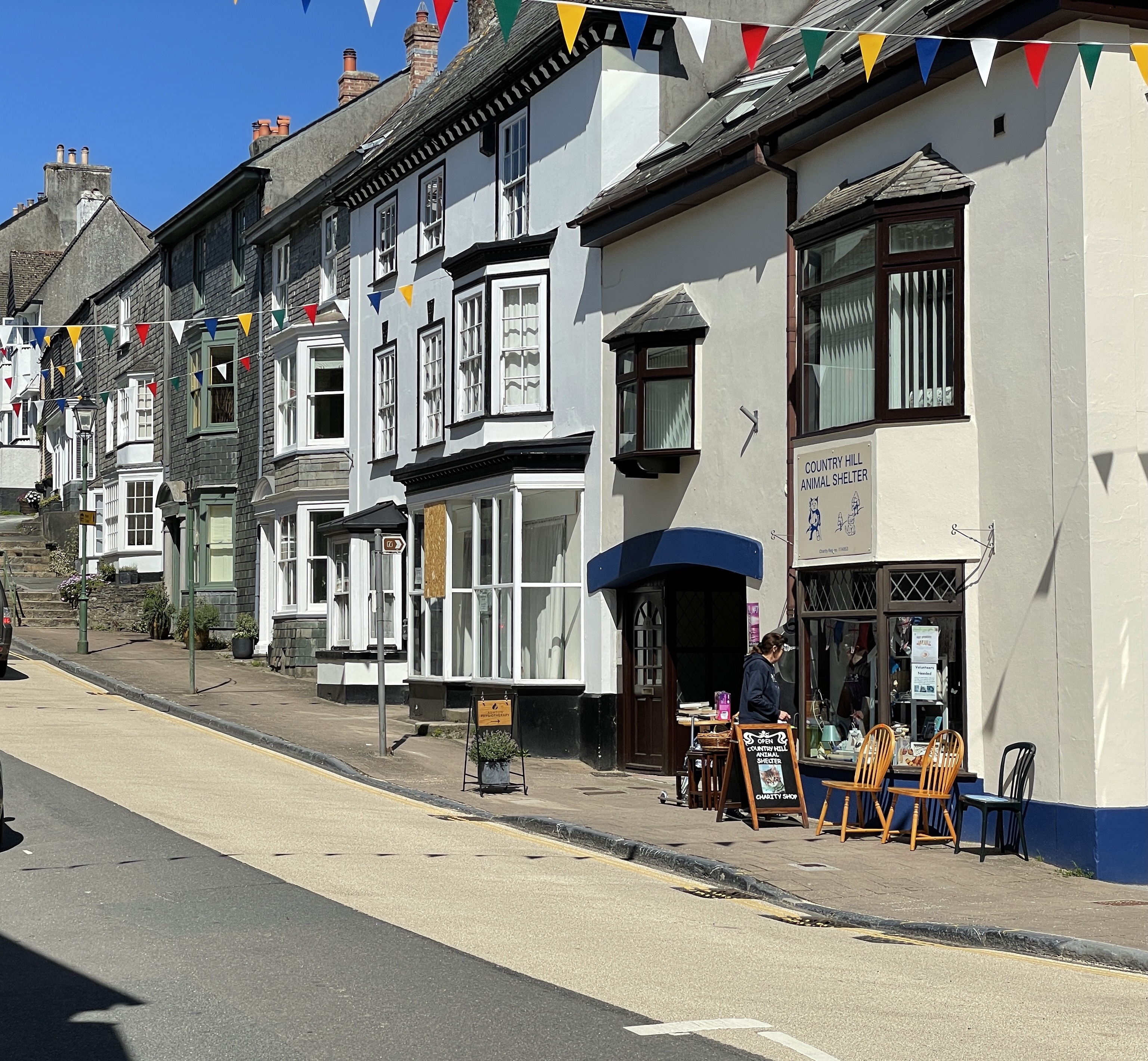
Nothing remains of the Court House except a kerbstone outside the White Hart pub which is supposed to have come from one of the mullioned windows and a multitude of other pieces of stonework in gardens about the town that are claimed as part of the masonry. Damaged during the Civil War when Royalist soldiers made their escape along the appropriately named Runaway Lane, by 1705 the house had fallen into decay. It was demolished and the stone was sold for re-use.
St George’s Church Modbury
Katherine would likely re cognise St George's church, much of which dates from the early fourteenth century, although a lightning strike in 1621 apparently meant some rebuilding was needed. A somewhat eroded effigy of Katherine’s great grandfather, William Champernowne (died 1463) wearing a collar of roses, can still be found in the Champernowne transept.
cognise St George's church, much of which dates from the early fourteenth century, although a lightning strike in 1621 apparently meant some rebuilding was needed. A somewhat eroded effigy of Katherine’s great grandfather, William Champernowne (died 1463) wearing a collar of roses, can still be found in the Champernowne transept.
Outside a f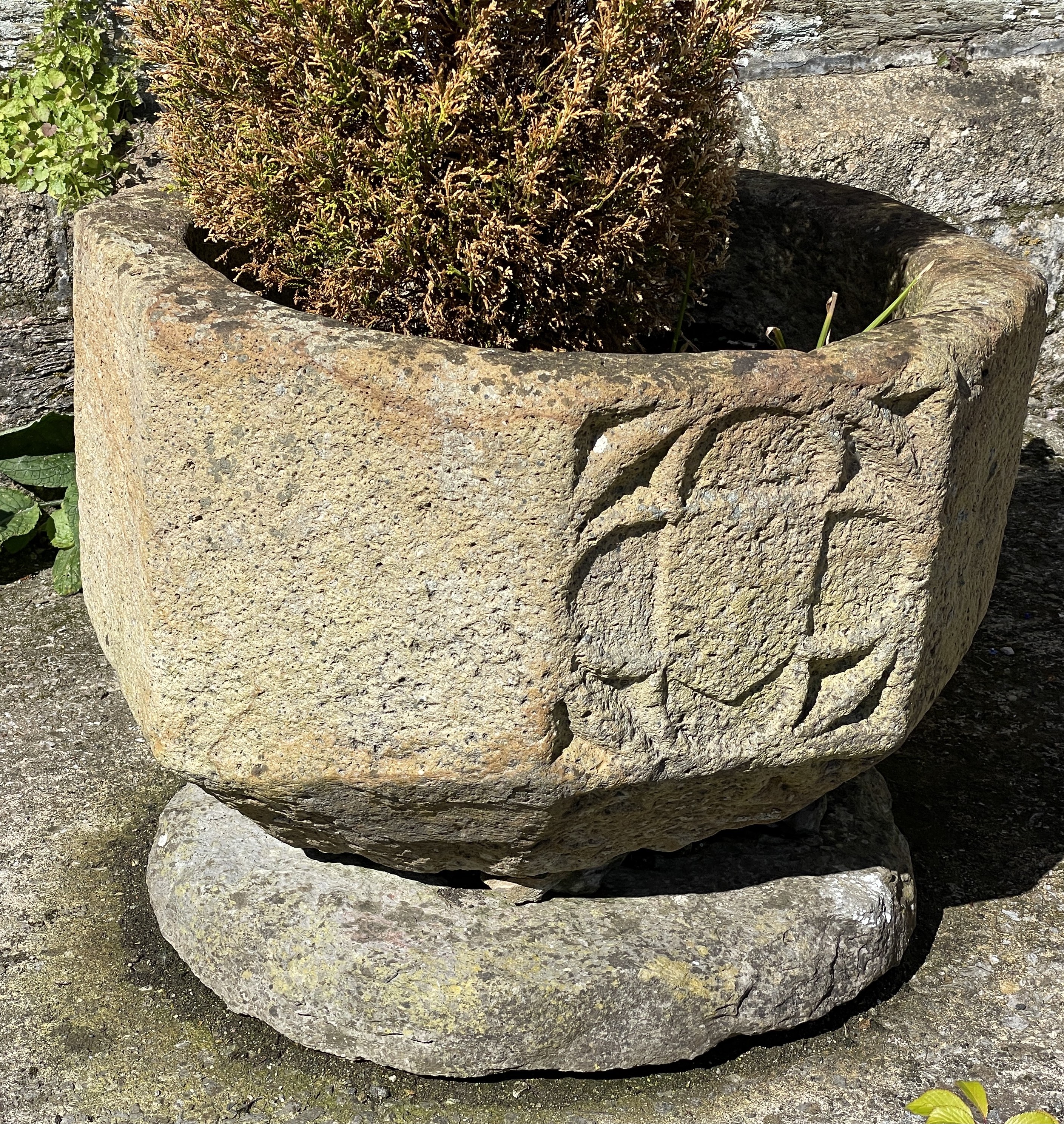 ifteenth century stone font serves as a planter. Could this be the very font used when Katherine was baptised?
ifteenth century stone font serves as a planter. Could this be the very font used when Katherine was baptised?
The River Dart
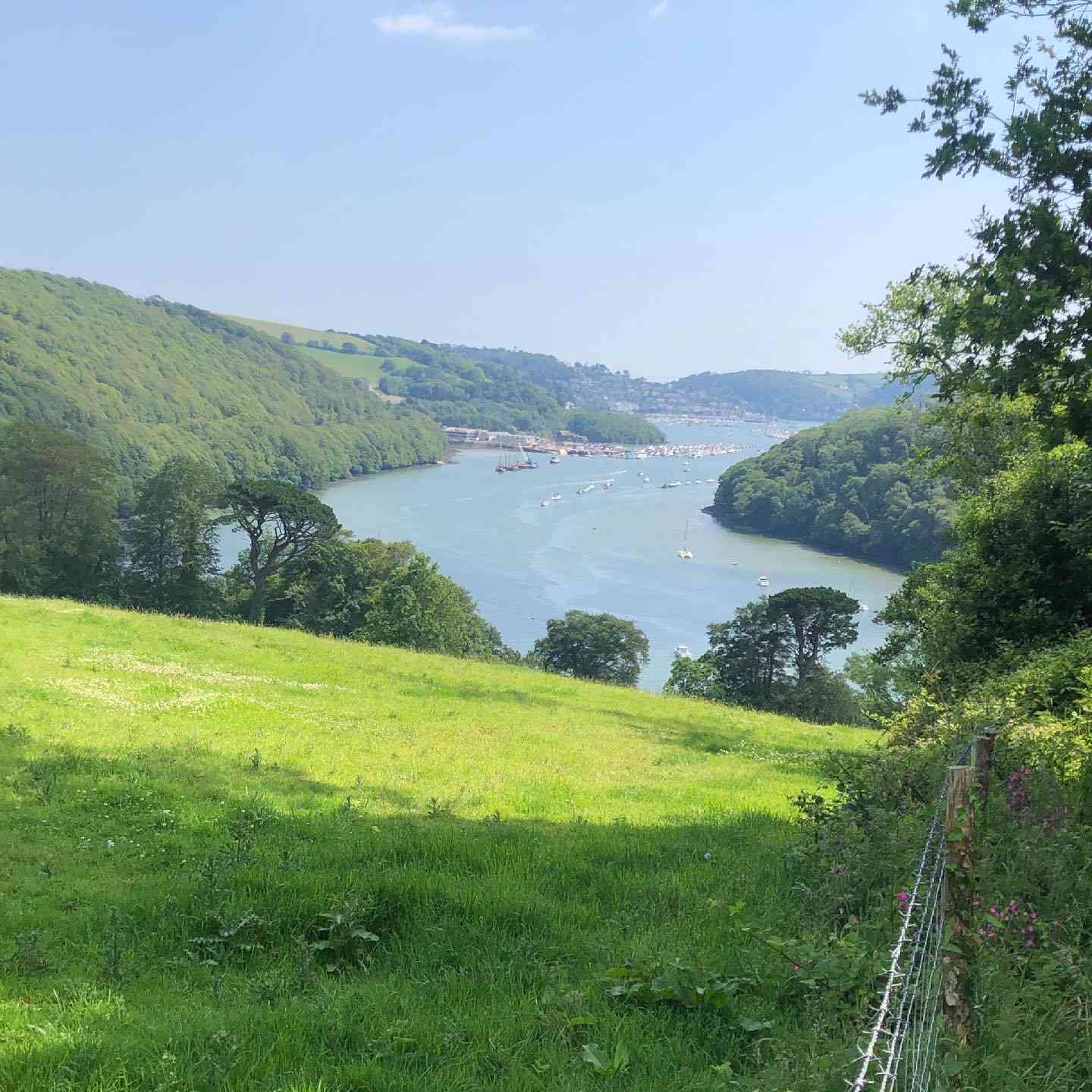 The River Dart formed the backdrop to the early years of Katherine’s marriage to Otho (Otes) Gilbert. It has been suggested that it was Otho who built the Tudor mansion house known as Greenway Court that stood where Agatha Christie’s holiday home, in the care of the National Trust, now stands. There is evidence, however, in a despatch from Thomas Howard, Earl of Surrey, that Otho’s uncle, John Gilbert (died 1539) already had a house on that spot as early as 1522. Surrey was commander of the King’s forces against France and sent this despatch from the King’s ship Mary Rose as he was surveying the coastal defences. He writes
The River Dart formed the backdrop to the early years of Katherine’s marriage to Otho (Otes) Gilbert. It has been suggested that it was Otho who built the Tudor mansion house known as Greenway Court that stood where Agatha Christie’s holiday home, in the care of the National Trust, now stands. There is evidence, however, in a despatch from Thomas Howard, Earl of Surrey, that Otho’s uncle, John Gilbert (died 1539) already had a house on that spot as early as 1522. Surrey was commander of the King’s forces against France and sent this despatch from the King’s ship Mary Rose as he was surveying the coastal defences. He writes
“……went into Dartmouth, to see what places we could find to lay in your great ships this winter. Never saw a goodlier haven after all our opinions. At the entry there is a blockhouse of stone, with an old castle on the same side, and another old castle on the other side, besides another blockhouse, and a chain ready to be laid. The town is not two arrows' shot thence, and the ships may lie two miles further within the haven, under John Gilbert's house, and have at least five fathom at low water.”
Otho Gilbert was born at Broadwoodkelly in 1513 (in the Inquisition for his father Thomas who died in 1528 he is aged 16) and he did not inherit from his uncle until the latter died in 1539, some years after Otho married Katherine. I have therefore taken the view that John Gilbert built and prepared the house on the banks of the River Dart for his heir, Otho, and his bride — one of several building projects John Gilbert had underway in the 1520s.
Little remains of the Tudor house known as Greenway Court, the ruins of which are shown next to the new mansion in a painting of around 1788 by William Payne. It was demolished by Edward Elton soon after he purchased the estate in 1791.
It is thought that Sir Humphrey Gilbert, Katherine’s second son may have been born at Greenway Court. Scholars have found it difficult to pinpoint his exact date of birth with either 1537 or 1539 possible.
Further upstream beyo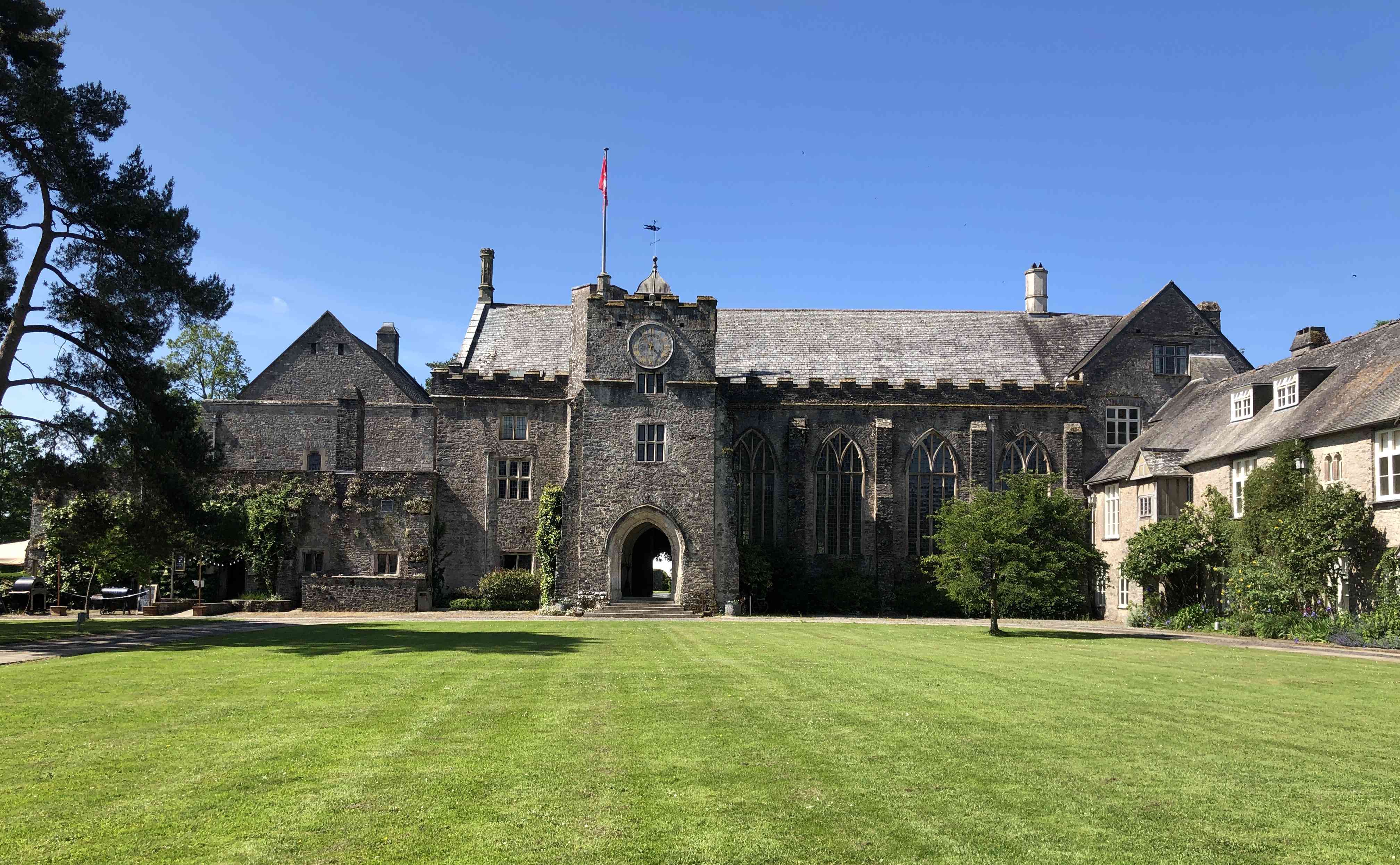 nd Totnes lies Dartington Hall. Katherine’s younger brother, Sir Arthur Champernowne, Vice Admiral of the Fleet of the West, Member of Parliament and a prominent supporter of the Huguenot cause in Normandy, acquired Dartington Hall in the 1550s. With his wife, Mary Norreys, widow of his cousin Sir George Carew who went down with the Mary Rose, Sir Arthur made extensive changes to bring the splendid medieval hall built by John Holand in 1400 up to date. Katherine would likely have visited her brother there, and perhaps after Sir Arthur’s death in 1578 continued to visit her nephew Gawen and his French wife Lady Gabrielle (Roberda) Montgomery. The Champernowne family remained at Dartington until 1925.
nd Totnes lies Dartington Hall. Katherine’s younger brother, Sir Arthur Champernowne, Vice Admiral of the Fleet of the West, Member of Parliament and a prominent supporter of the Huguenot cause in Normandy, acquired Dartington Hall in the 1550s. With his wife, Mary Norreys, widow of his cousin Sir George Carew who went down with the Mary Rose, Sir Arthur made extensive changes to bring the splendid medieval hall built by John Holand in 1400 up to date. Katherine would likely have visited her brother there, and perhaps after Sir Arthur’s death in 1578 continued to visit her nephew Gawen and his French wife Lady Gabrielle (Roberda) Montgomery. The Champernowne family remained at Dartington until 1925.
Dartmouth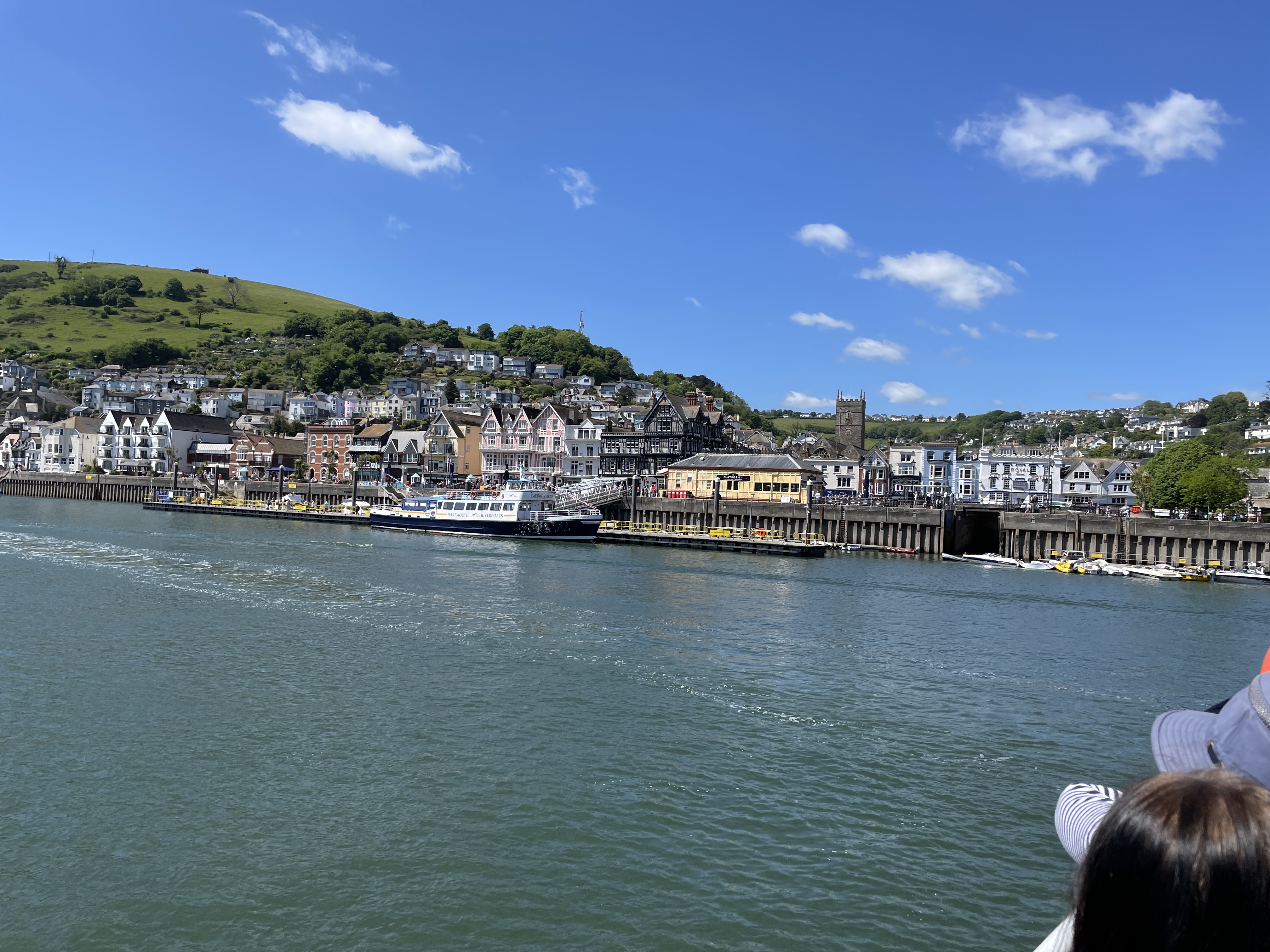
The Gilbert ships plied their trade in and out of the port of Dartmouth and Katherine would have know the town well.
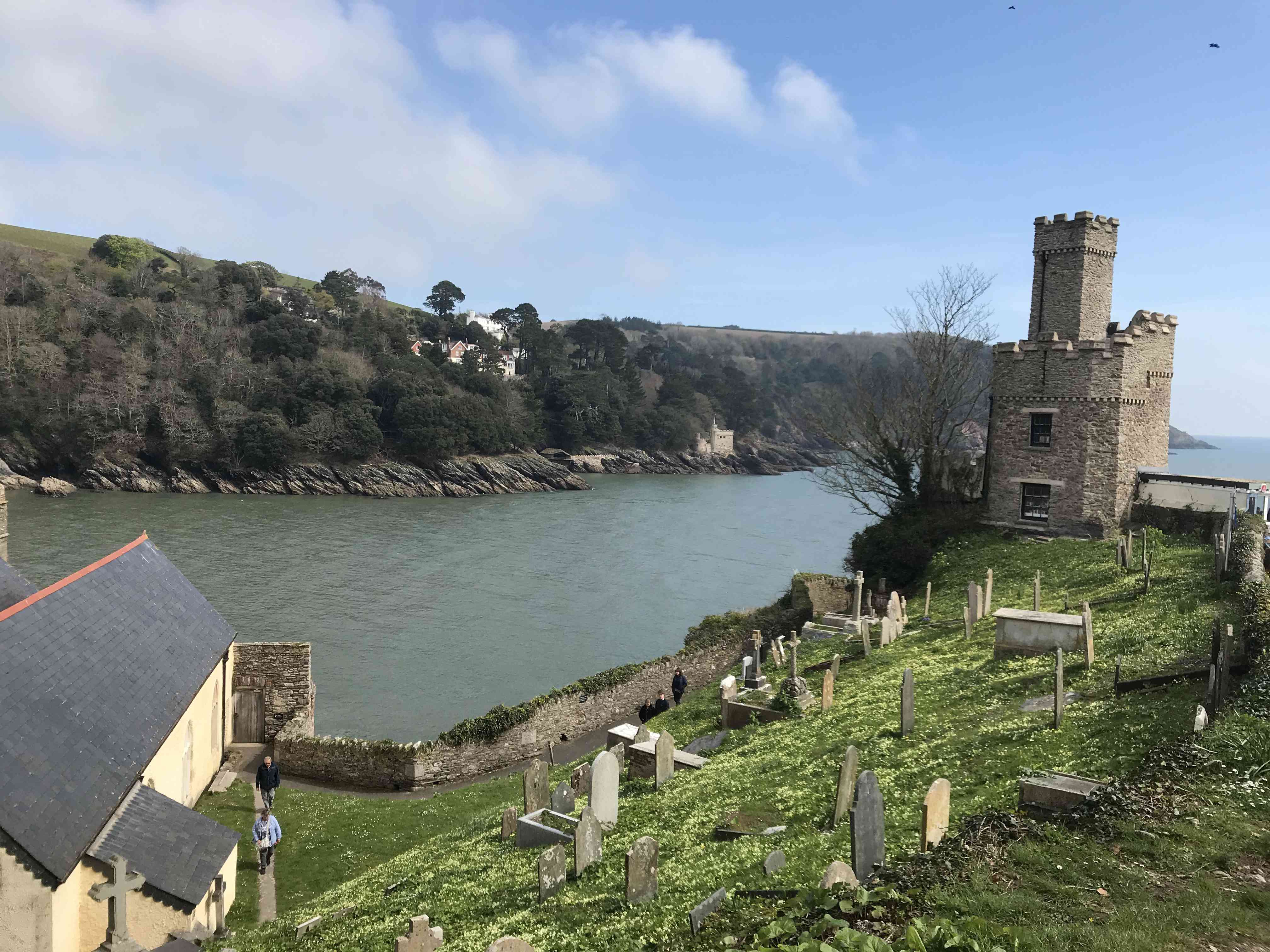 Building of Dartmouth Castle at the river mouth began in 1388 to protect the town against French raids during the Hundred Years War. The Castle was eventually completed around 1493. The defences included a massive iron chain (referred to in Thomas Howard’s despatch above) that could be strung across the River Dart to stop marauding ships getting through. Other defences, including a gun fort on the river bank at Bayard’s Cove right on the edge of Dartmouth town, were added by about 1530.
Building of Dartmouth Castle at the river mouth began in 1388 to protect the town against French raids during the Hundred Years War. The Castle was eventually completed around 1493. The defences included a massive iron chain (referred to in Thomas Howard’s despatch above) that could be strung across the River Dart to stop marauding ships getting through. Other defences, including a gun fort on the river bank at Bayard’s Cove right on the edge of Dartmouth town, were added by about 1530.
Although built by the town of Dartmouth, the castle was taken by force in 1552 by Katherine’s cousin Sir Peter Carew. The Carew family had owned the nearby manor of Stoke Fleming for centuries and Sir Peter claimed that the castle was built on his land. The town took him to court, but he probably held on to the castle until his death in 1575.
Compton Castle
Katherine and Otho no do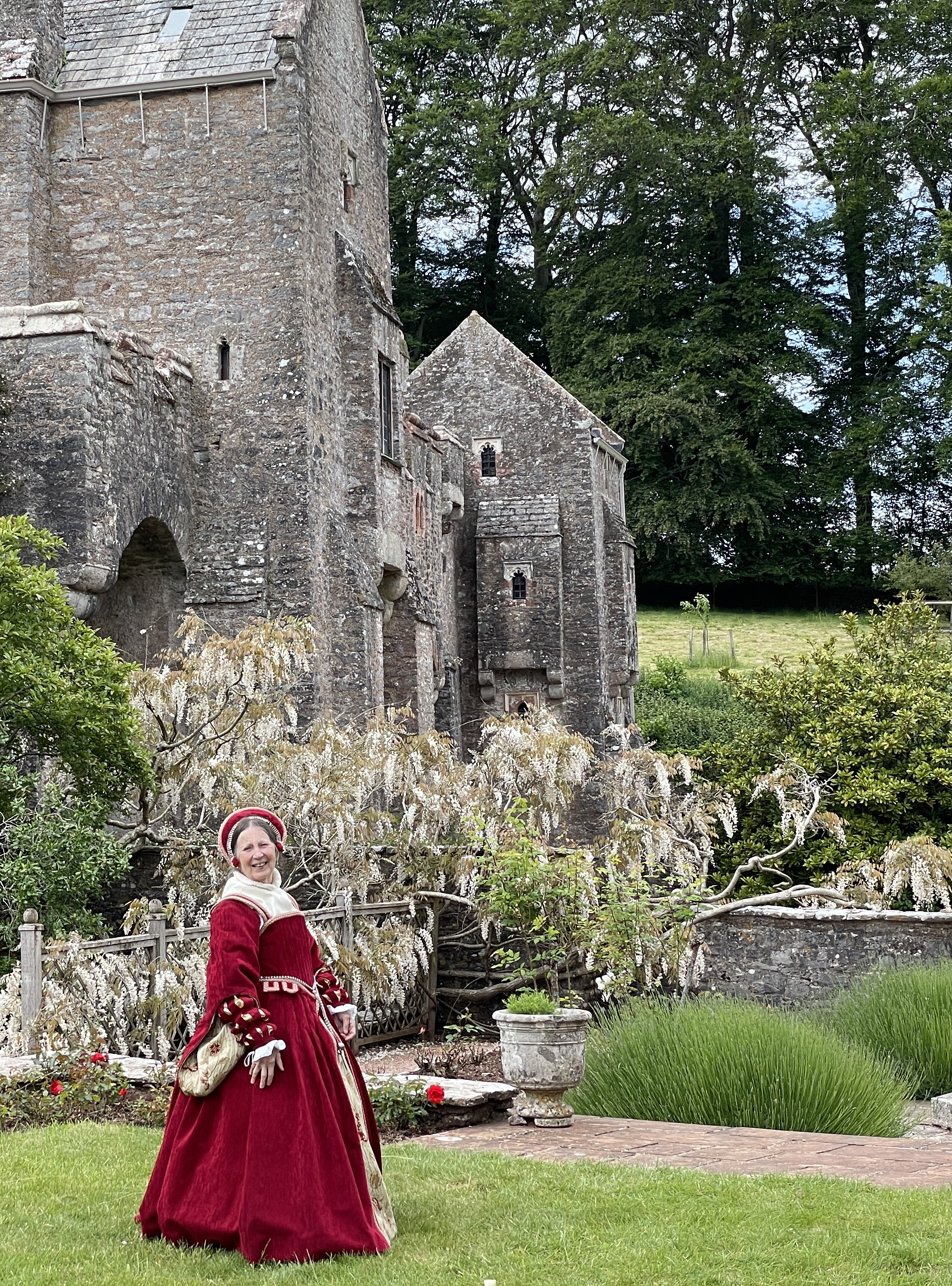 ubt also spent some time at the Gilbert’s family home at Compton, a fortified manor house near the village of Marldon. Some of their children were probably born there. Built in 1329 by Geoffrey Gilbert following his marriage to the heiress Joan de Compton, Compton has undergone a number of changes over the centuries. Additional towers and fortifications were added in the late fifteenth century. The curtain walls may have been added by John Gilbert in the 1520s — perhaps about the same time as Thomas Howard was surveying the Dart’s defences against an attack by the French.
ubt also spent some time at the Gilbert’s family home at Compton, a fortified manor house near the village of Marldon. Some of their children were probably born there. Built in 1329 by Geoffrey Gilbert following his marriage to the heiress Joan de Compton, Compton has undergone a number of changes over the centuries. Additional towers and fortifications were added in the late fifteenth century. The curtain walls may have been added by John Gilbert in the 1520s — perhaps about the same time as Thomas Howard was surveying the Dart’s defences against an attack by the French.
The Gilbert family left Compton in the eighteenth century, initially for Sandridge, which is where Katherine’s third son Adrian Gilbert made his home. In 1785 when Edmund Gilbert became a vicar they moved to Bodmin and the Compton estate was sold to James Templar of Stover. After passing through a number of owners the house fell into disrepair but was bought back by Commander Walter Raleigh Gilbert in the early 1930s and gradually restored. It remains the Gilbert family’s home and is in the care of the National Trust.
St John the Baptist Church Marldon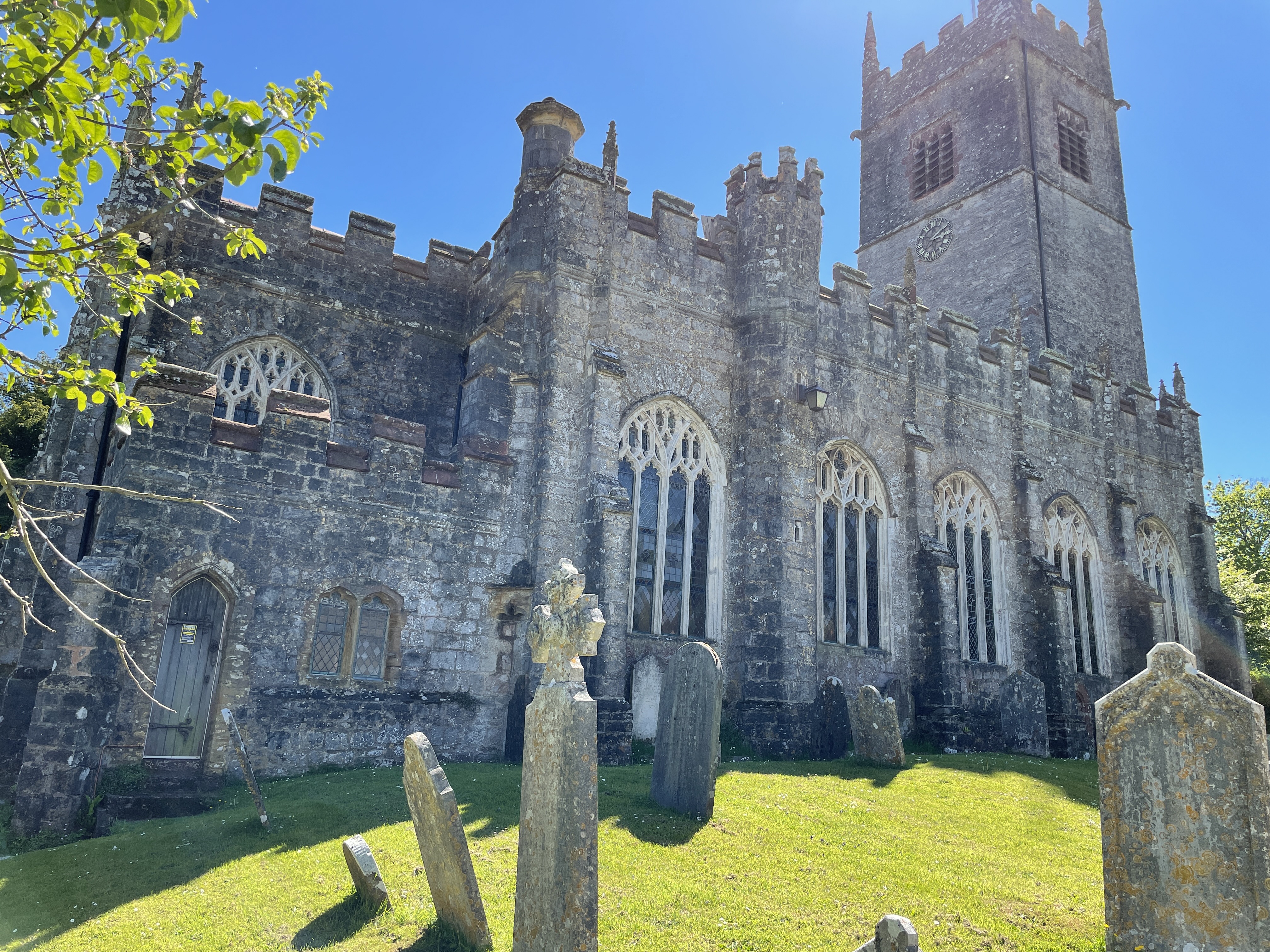
Katherine would have been a frequent visitor to this church. Perhaps she came here for her churching after the birth of her children who may have been baptised in the fifteenth century font that can still be seen today.
The tower dates from approximately 1400 while much of the remainder rebuilt around 1450, probably at the behest of the first Otho (Otes) Gilbert of Compton (died 1492). The North and south aisles were extended to the East in around 1520 by his son, John Gilbert.
This small recumbent 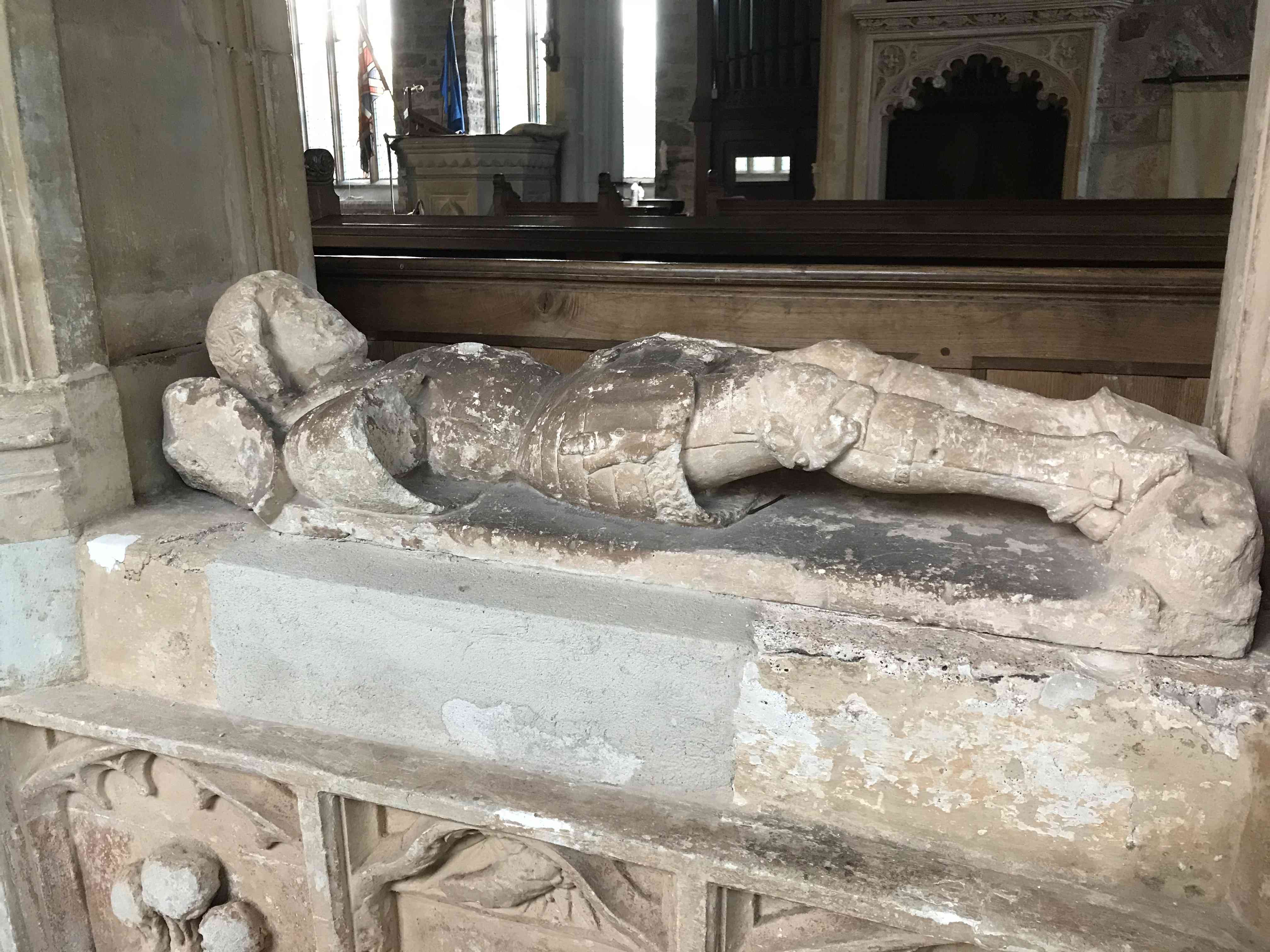 effigy in armour may represent William Gilbert who died in 1453, aged around 13 years. William was the eldest son of the first Otho and his first wife Alice Mules (died 1441).
effigy in armour may represent William Gilbert who died in 1453, aged around 13 years. William was the eldest son of the first Otho and his first wife Alice Mules (died 1441).
East Budledigh
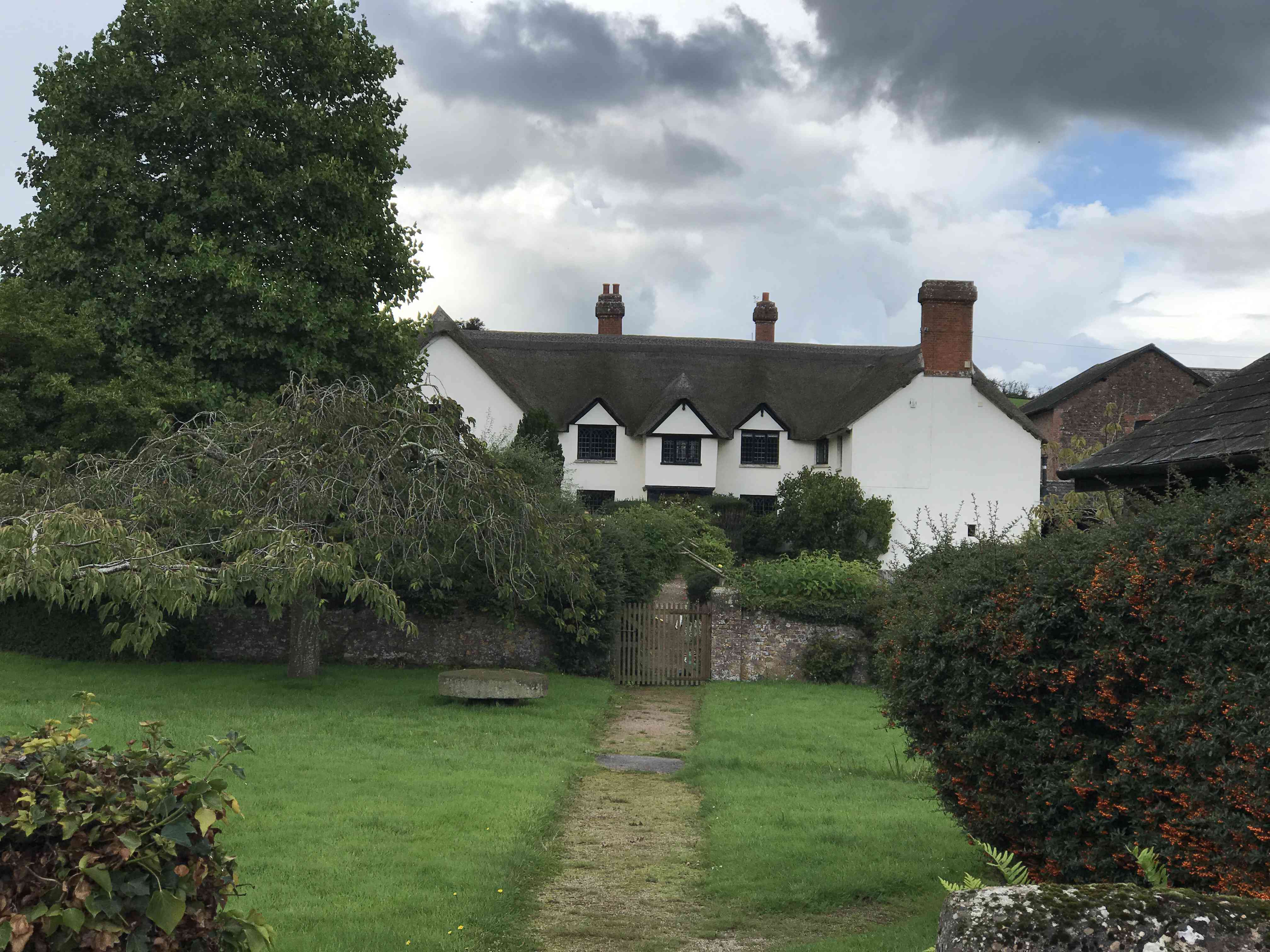 Poer Hayes — now known as Hayes Barton — near East Budleigh is now a private house. It was Katherine’s home for many years with her second husband, Walter Raleigh senior, and in this simple Devon farmhouse their most famous son, Sir Walter Raleigh, was born. Katherine and her husband left Poer Hayes for Exeter at some point during the 1560s.
Poer Hayes — now known as Hayes Barton — near East Budleigh is now a private house. It was Katherine’s home for many years with her second husband, Walter Raleigh senior, and in this simple Devon farmhouse their most famous son, Sir Walter Raleigh, was born. Katherine and her husband left Poer Hayes for Exeter at some point during the 1560s.
On 26 July 1584 Sir Walter Raleigh wrote to Richard Duke seeking to purchase his childhood home saying
“… for the natural disposition I have for that place [Hayes] being borne in the howse, I had rather seat myself there than anywhere else.” However the transaction was never completed.
All Saints Church East Budleigh
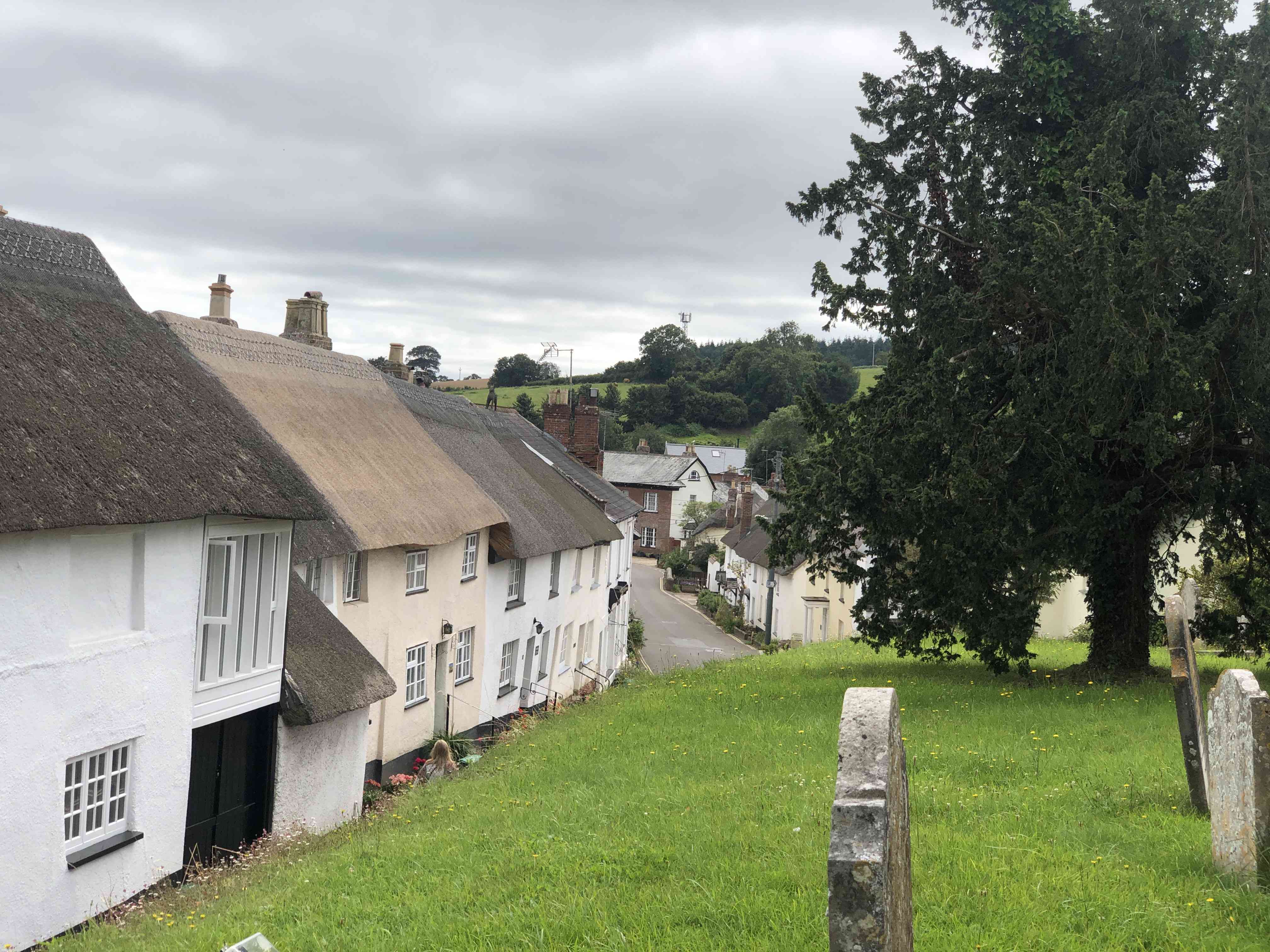 The view from this lovely church cannot have changed much since Katherine and her husband worshipped here. Wa
The view from this lovely church cannot have changed much since Katherine and her husband worshipped here. Wa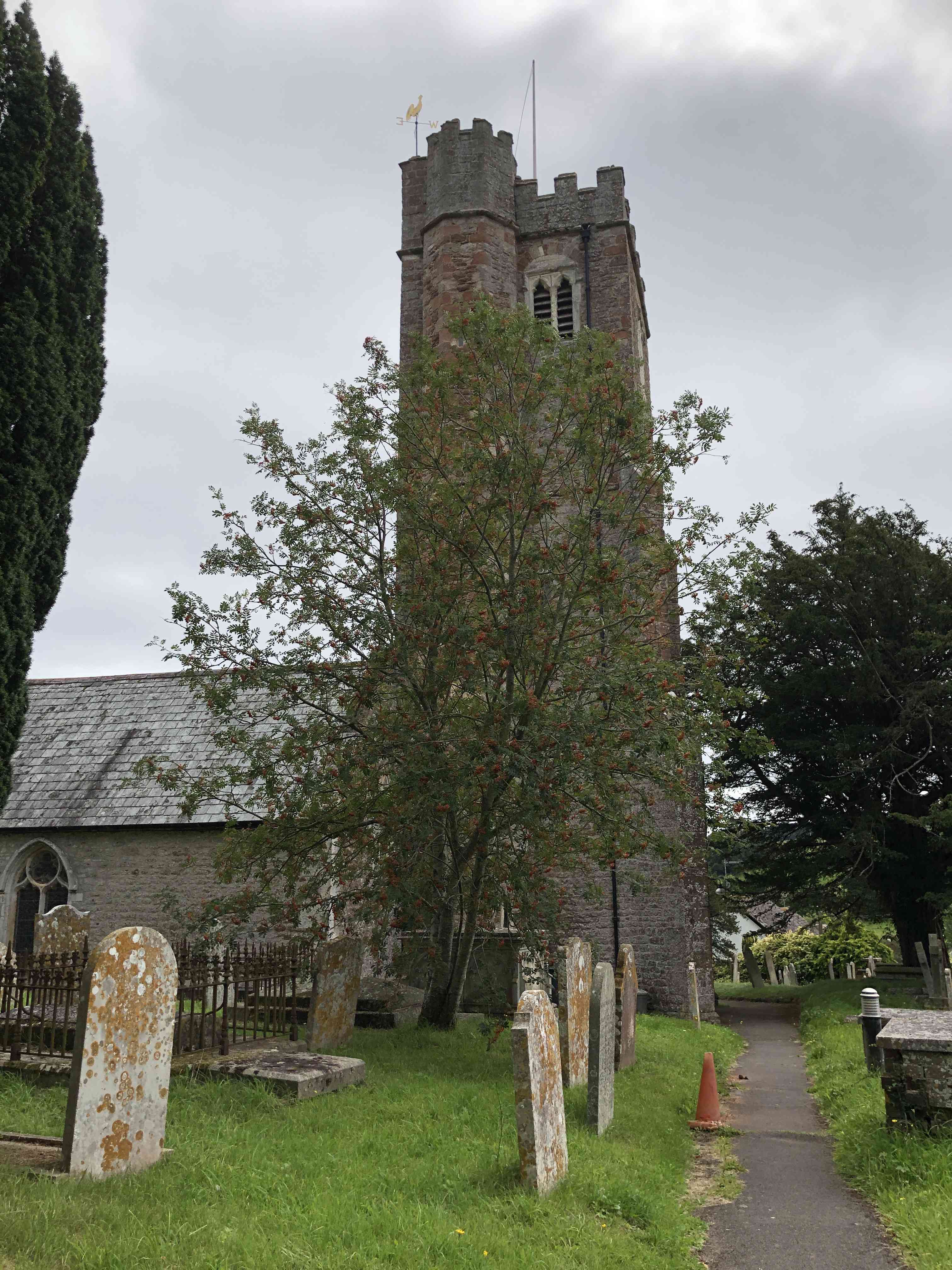 lter Raleigh senior is thought to have been church warden in the early 1560s.
lter Raleigh senior is thought to have been church warden in the early 1560s.
In the nave a stone marking the grave of Walter Senior’s first wife Joan Drake, with strange mirror-image lettering is often hidden beneath a carpet. A remarkable set of some sixty carved bench ends bear designs including coats of arms ( those of the Raleigh family feature on their family pew), merchant ships, mythical monsters, a green man and elements of the arms of the Company of Weavers and Fullers of Exeter. One is dated 1537.
Mohun’s Ottery
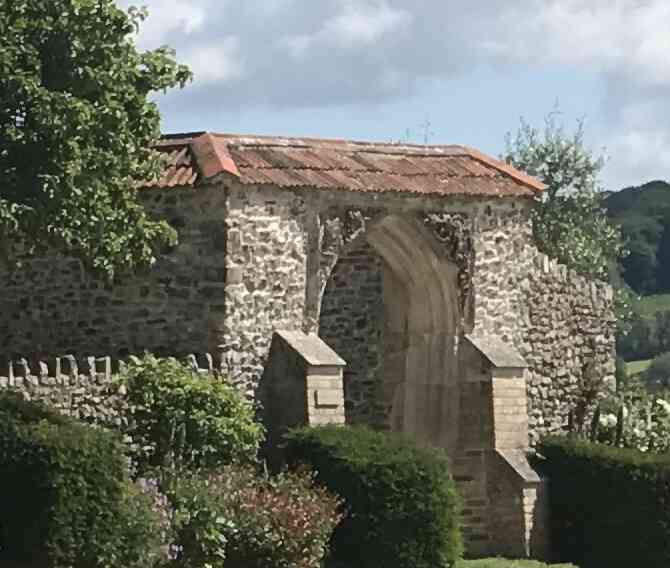
Katherine’s uncle, Sir William Carew (died 1535) and later her cousin, Sir Peter Carew (died 1575) lived at Mohuns Ottery near the village of Luppitt. Now a private house, only the gatehouse survives from Sir Peter’s time.
St Mary’s church Luppitt
Sir William Carew was buri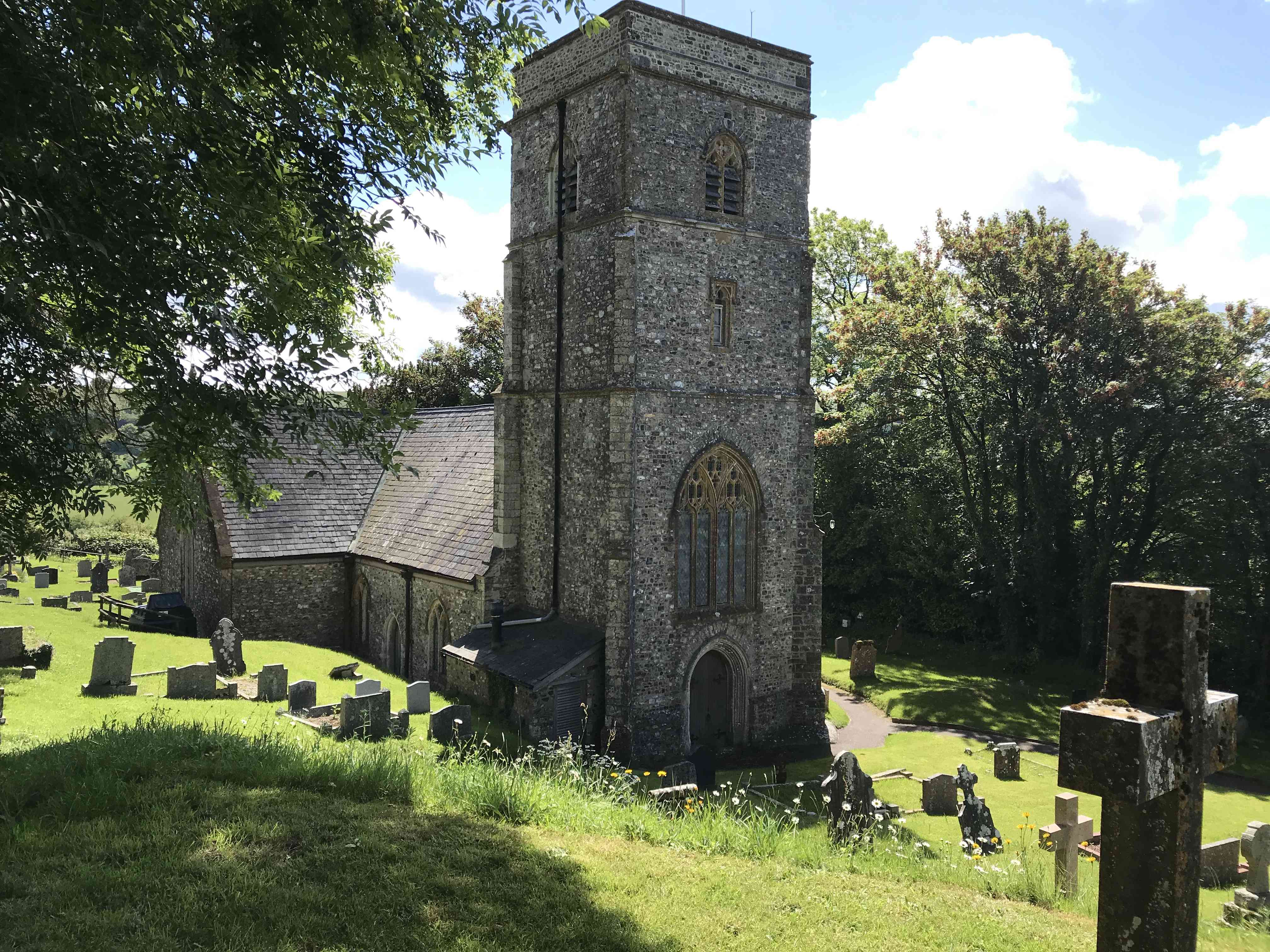 ed in St Mary’s which retains its Norman tower, but was otherwise completely rebuilt in about 1300-1320, possibly by Sir John Carew.
ed in St Mary’s which retains its Norman tower, but was otherwise completely rebuilt in about 1300-1320, possibly by Sir John Carew.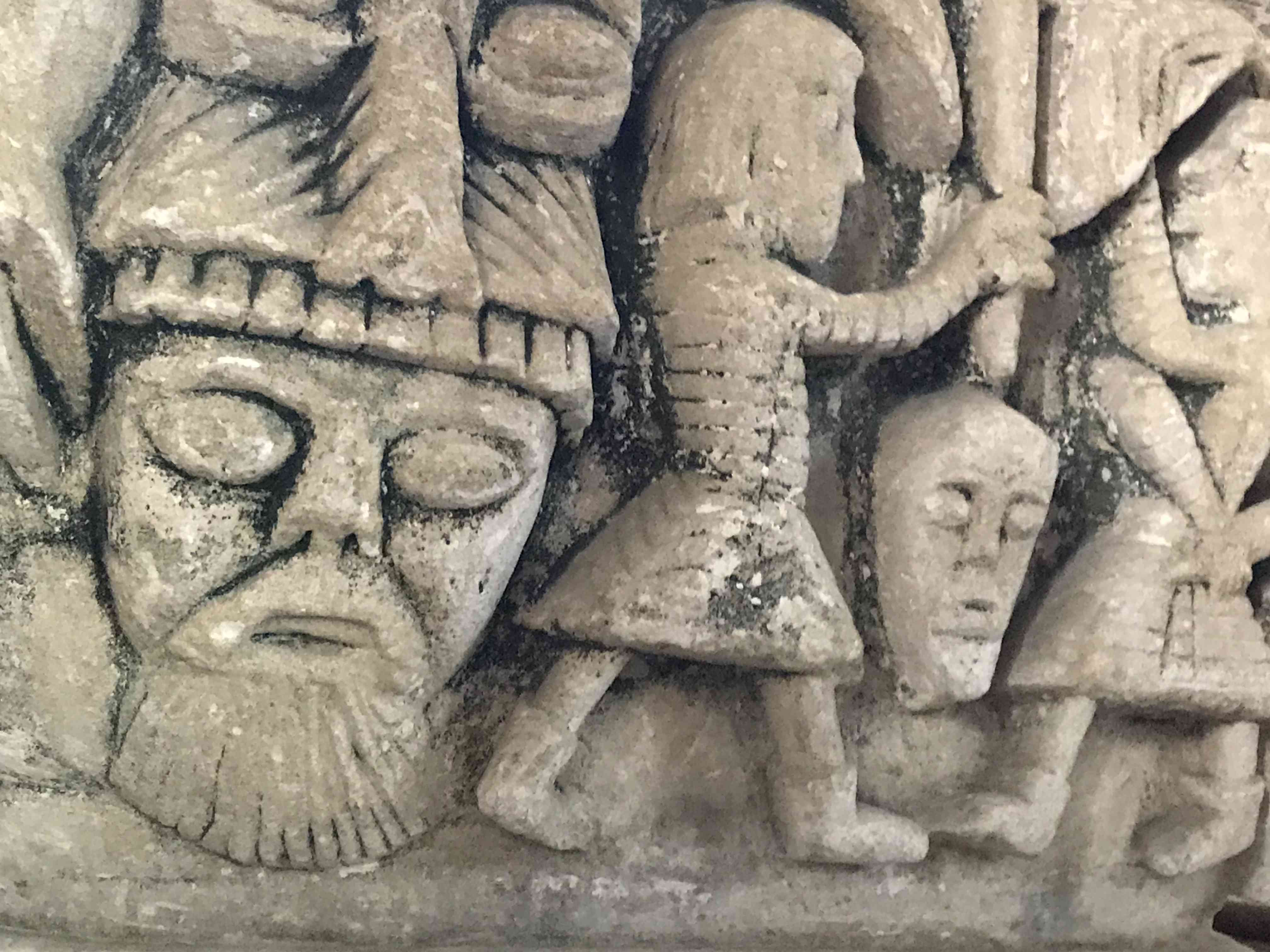
Be sure to look out for extraordinary early Norman carved font with its frightening images.

Rougemont Castle, Exeter

Only the ruins remain of this once formidable fortress where Katherine sat in a prison cell with Agnes Prest, Exeter’s only protestant martyr during the reign of Mary 1, on the night of 15 August 1557.
Exeter Cathedral Green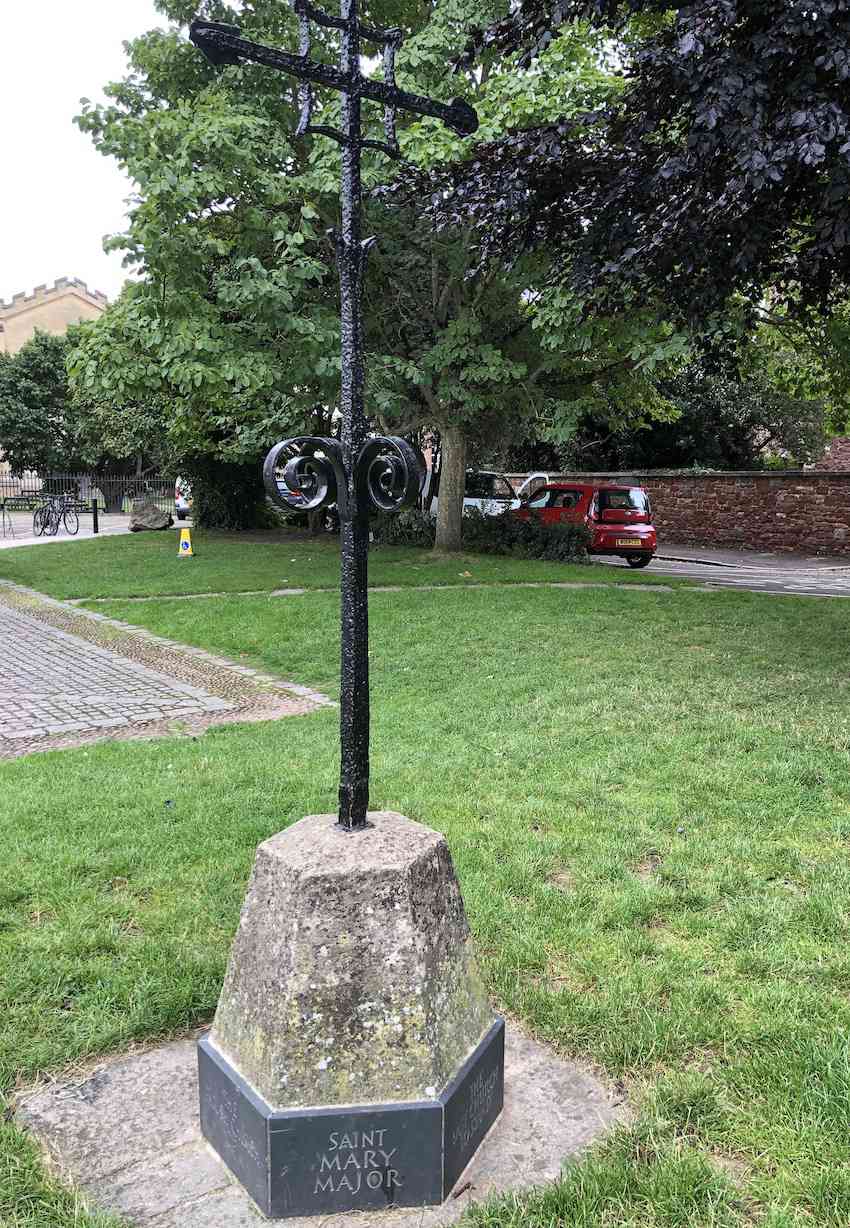
Katherine spent her twilight years, first with her husband then as a widow, in a house “close by the Palace gate.” One of the seven gates around Cathedral Close it was situated in front of the Bishop’s Gate entrance to the Bishop’s Palace and garden. Katherine’s son Sir John Gilbert had a house backing onto the Cathedral grounds.
Katherine and Walter senior were buried in nearby St Mary Major’s Church where they had worshipped. St Mary Major is long gone, the site marked only by a simple cross on Cathedral Green.
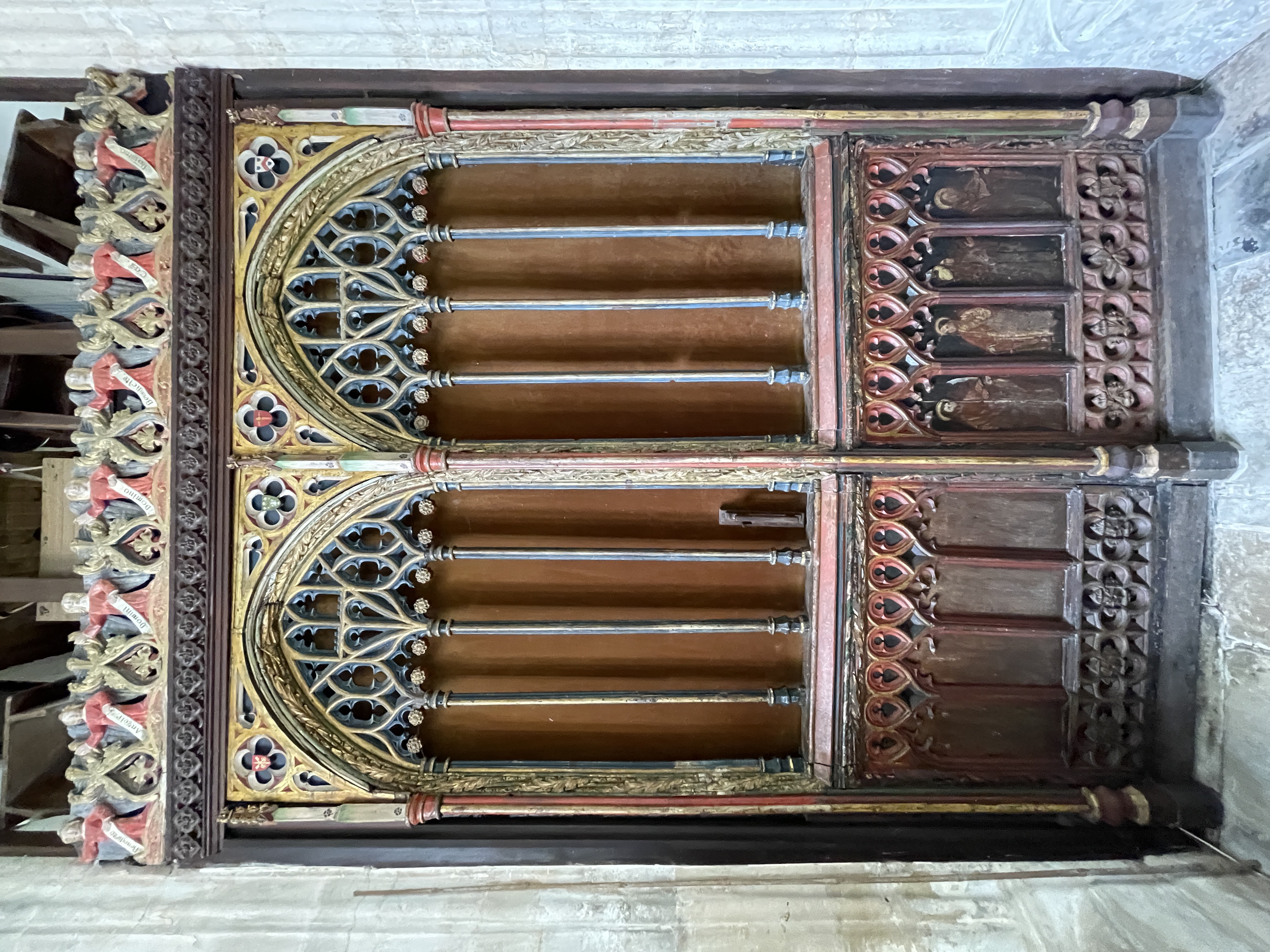
But part of the rood screen from the old church is preserved in St Mary’s Church, Offwell.
Exeter Cathedral
Katherine would of course also have known the magnificent Cathedral well, though not the lavish tomb of her eldest son, the first Sir John Gilbert and his wife Elizabeth Chudleigh.
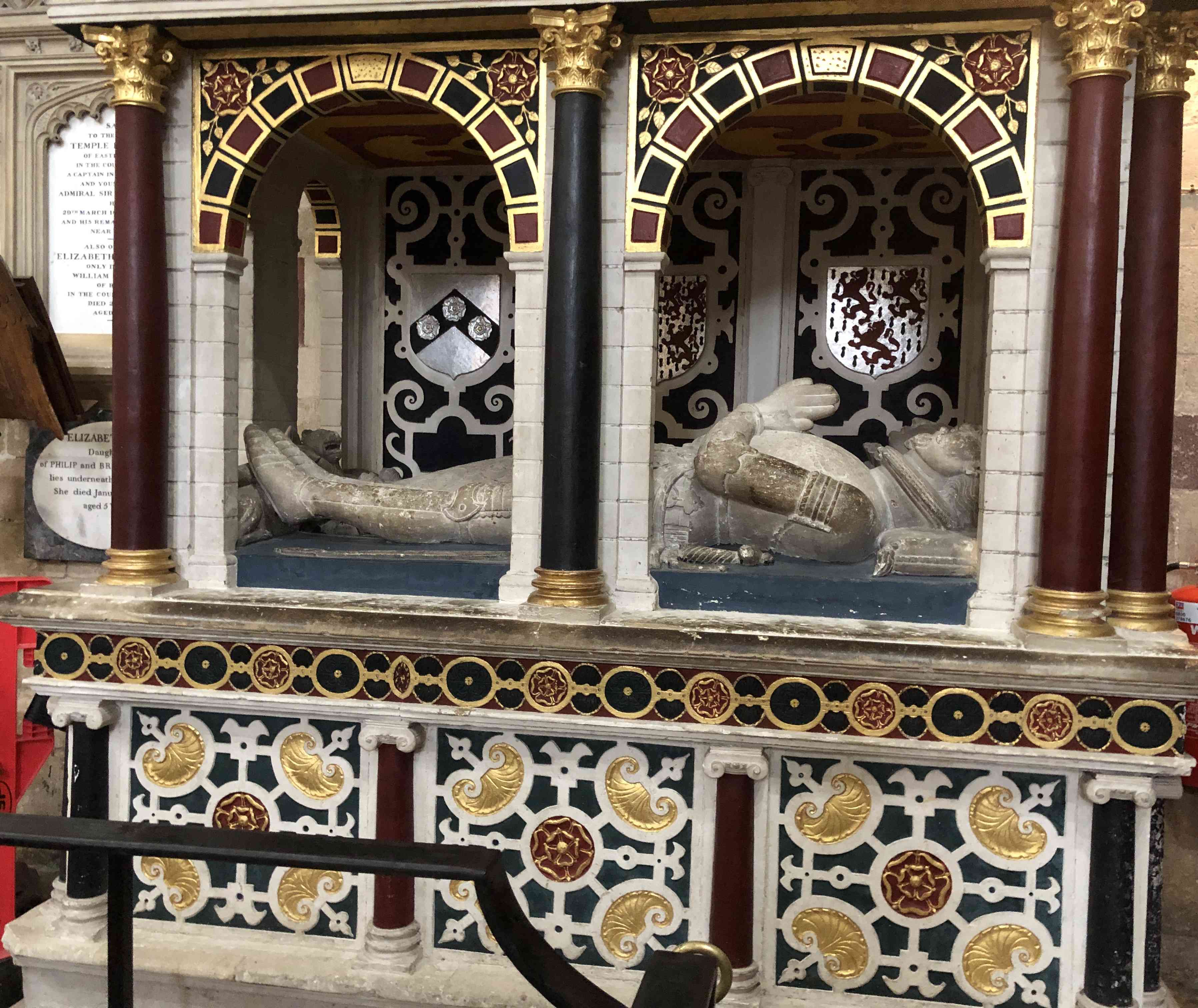
Sir John , who died in 1596, only outlived his mother by two years. The tomb which bears the coat of arms of the Gilberts and the Chudleighs, was built some time after his wife’s death some years later.
Other members of her family commemorated in the Cathedral include Katherine’s uncle Sir Gawen Carew and her cousin Sir Peter Carew.